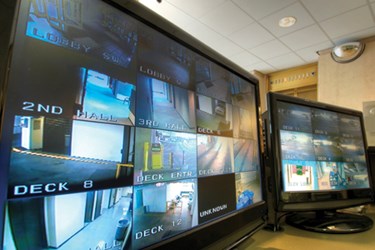How To Explain ROI To Your Clients Switching From Analog To IP Video Surveillance
By Ally Kutz, contributing writer

Although analog cameras have been a large part of security surveillance in the past, better quality and competitive rates have brought IP cameras to the forefront of the market.
A blog post by iTech Digital president Mark Nazarenus points out the ROI for your clients who swap analog for IP cameras — who will not only see qualitative benefits from these solutions but also will be able to confirm it was a good decision with dollars and cents.
IP cameras offer better quality of picture when compared to analog cameras. Quality of video is based on pixels per foot (ppf) applied to a targeted recording area (TRA). With a standard analog camera, 240 pixels are applied to a TRA, whereas 1 megapixel (MP) IP camera offers the application 720 pixels to a TRA.
IP cameras also offer the ability to integrate with third-party applications — such as point of sale (POS) and employee time and attendance — to coordinate systems already in place to work more efficiently.
Although each company’s requirements for surveillance differ, IP cameras can be more cost-effective. IP cameras tend to run at a higher price paralleled to analog cameras, but their area of coverage is vastly larger in comparison.
Nazarenus’ blog provides the example of an area that requires TRA that is 30 feet wide: this would require 3 analog cameras — or 5 if facial recognition is required. For that same area, one 2 MP camera could provide surveillance of that area and provide facial recognition capability. The blog also does the math: 5 analog cameras cost a total of about $750; one 2 MP IP camera costs about $480.
Not everyone’s cost comparison equation, however, will work out the same, depending on requirements — and what your customer is considering. IP cameras come in different resolutions ranging from 1 MP to 5 MP, with a TRA pixel application between 720 pixels to 1920 pixels and facial recognition coverage area from 19 feet to almost 80 feet.
As a trusted advisor, you need to help your customer determine the solution that is best for them. In the blog Nazarenus tells his customers, “It is important not to get caught up in the marketing hype. We must return to evaluating the base technology to understand what solution is right — and most cost-effective — for you and your company.”
To read the full blog post and see the entire cost analysis of the example, click here.
For resources on IP video and other video security solutions, visit BSMinfo.com
